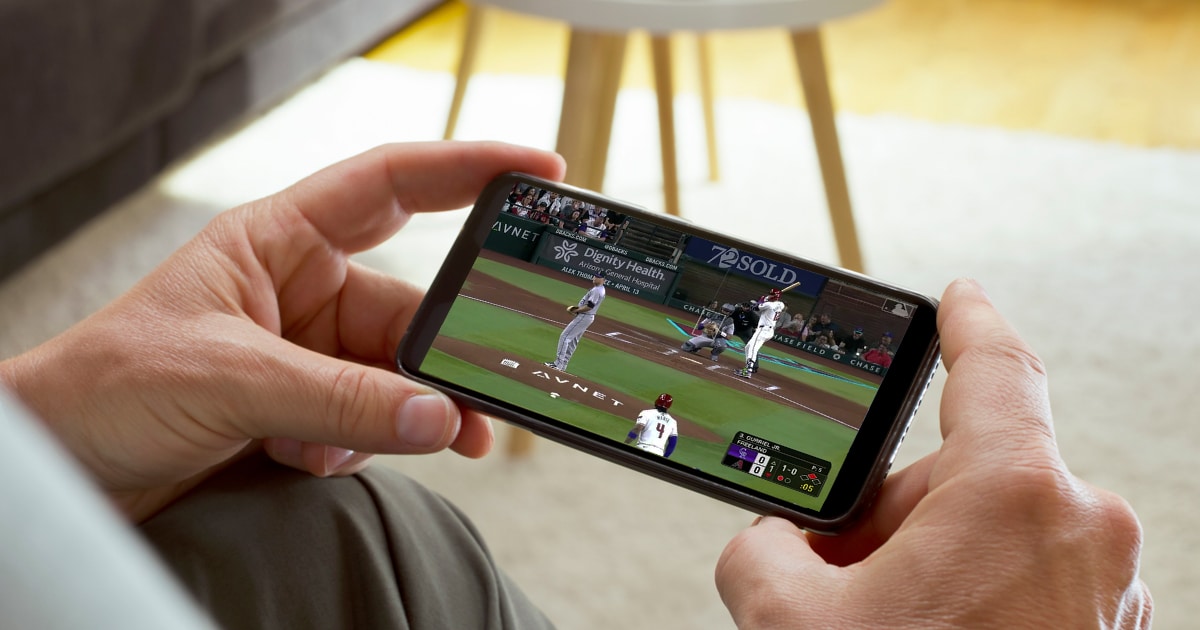I was so distracted from abnormal world events these past few years that it didn’t hit home that the Coyotes…
The Business Effects of a Shorter MLB Game

Major League Baseball is working hard to save themselves from themselves if you know what I mean… rights holders and sponsors be damned.
Ok, that’s dramatic and actually wholly inaccurate.
Rights holders, sponsors, and every fan, player, and otherwise interested party should be happy with the historic step Major League Baseball took to keep itself relevant. Kudos to Major League Baseball for taking an important step to improve the fan experience by speeding up the game.
Since 2007, baseball has seen a decline in attendance, ratings, and general overall popularity. That being said, it’s still America’s pastime and, despite all the pundits calling for its downfall, the MLB managed to set an all-time record for revenue at just under $11B last year.
MLB Rule Changes for 2023
Understanding that revenue is not the only measure of success, Major League Baseball enacted three significant rules in 2023 to improve the fan experience.
One, they took away the team’s ability to shift the defense… not a big deal, really, but it does enhance the batter’s ability to get on base which generates offense, which… makes fans happy.
Two, they increased the size of the base, which makes the game a little safer and a little more exciting as a mere 4.5” gives baserunners that much more of an advantage when stealing a base.
Finally, and most importantly, they instituted a game clock which so far has significantly decreased the duration of the at-bat and therefore the duration of the game. In 2023, pitchers will have 15 seconds to throw a pitch with the bases empty and 20 seconds if there’s a runner on base; hitters will need to be in the batter’s box with 8 seconds left on the pitch clock.
Are you listening, Manny Machado?
If you look at it by the numbers, an average baseball game in 2022 took three hours and four minutes. So far this season, games are lasting two hours and thirty-eight minutes.
That’s a nearly 15% decrease in-game time.
The Effect Rule Changes Have on the Broadcast
The difference in timing means broadcast rights holders have lost two in-game commercial breaks with roughly 2 minutes of broadcasting assets each. Before you say anything like “That doesn’t seem like a lot,” let’s do the math:
Let’s say (conservatively) that broadcasters lost four (4) minutes of break time, not counting rejoins or bumpers or anything that makes the math harder. Four minutes translates to eight (8) thirty-second ads that a station would sell for roughly $2,500 a piece – depending on the team and the market.
For those of you who haven’t stopped reading, that’s $20,000 per game. Each team plays at least 162 games per regular season. According to my calculator, that’s roughly $3.2 million dollars a year, per team. There are thirty (30) teams in Major League Baseball for a net loss of just under $100 million dollars.
Please understand that the last three paragraphs represent more math than I ever did in my 14 semesters at ASU.
We’ve already established that under Rob Manfred’s leadership, baseball posted a record revenue year just last year despite its alleged decline in popularity. Sticking rights holders (which oftentimes includes the team themselves) with the bill for a significant rule change that impacts revenue is bold (to say the least) and yet, it’s being lauded as a brilliant move in the world of professional sports.
How Should Rights Holders Respond?
Finally, we’re getting to what matters most to those of you who have invested in a sports sponsorship with one (or more) MLB teams. A loss of ad breaks does not necessarily equate to a loss in opportunity with the sport. A rights holder may need to pivot any number of ways to make sure they minimize any revenue loss caused by the game being shortened. Here are just a few ideas they should enact:
-
- Digital assets – Whereas MLBAM (Major League Baseball Advanced Media) is highly restrictive, as a rights holder, look to digital media assets (particularly social media) to generate new and bigger revenue streams. Sponsored digital and video content would be a great way to replace revenue lost to having fewer avails in a game.
- Pre/post – Expand your broadcast coverage before and after a game. Before you scream ‘ratings’ at your computer screen, know that I realize that pre/post not only creates a production expense but also delivers fewer ratings than a game. Still, a simple expansion of these assets helps to offset the revenue loss.
- Contingency breaks – All games are different… pitching changes, injuries and other unplanned breaks in the action create opportunities that, in the past, we used to bolster posts (rating evaluations based on viewership). Rights holders should rethink these opportunities to maximize revenue as it holds that a faster, more popular game will generate higher ratings. I’d have to have my old FOX Sports job back to make this a better suggestion, but instead of using contingency breaks to make up points, I’d develop separate sponsorships for contingency breaks and make them relevant to the client… all while bolstering the value of said break with things like game flows and lower thirds relevant to the contingency.
- Rates – simply put, charge more. Baseball has so many good things going for it. Every year it becomes the ‘only game in town’ once basketball and hockey finish their seasons (no offense soccer…you’re getting there!) The game’s demo is not as old or as male as people tend to think of it, and in certain markets, baseball is king. Charge accordingly. Also, it’s important to remember that the ‘live’ sports point is the most valuable point to be had in the television landscape.
- Maximize partnerships with sports books – The pace and nature of baseball is perfect for gambling. Whereas I personally don’t care for betting, others clearly do. Rights holders need to cash in on this in a big way and when they do, that $1B miss will evaporate in no time.
How Should Sponsors Respond to MLB’s Rule Changes?
I don’t see sponsors having to do much other than enjoy the benefits that speeding up the game will create. I would make sure my contract is on solid footing, whether that be with a team or a rights holder. It’s a great time to get your renewal terms in order before the data of a better game with higher engagement bolsters teams and rights holders to raise rates.
Beyond that, enjoy the fact that a team or league you partner with has the foresight and courage to change the game for the better. When NBA Commissioner Adam Silver says things like “We should learn a thing or two from baseball,” you can be assured that other leagues are envious of this change.
The Only Constant in Business is Change…
The fact is, our world is changing – and before you get all political on me, it’s ALWAYS been changing. Successful governments, corporations, leagues, teams, and people all understand the inevitability of change. Professional sports are not immune to these realities. It looks to me like baseball made an important move that will improve the game for everyone including rights holders and sponsors.
Due diligence is an important component of positive change… a tip of the cap to Commissioner Rob Manfred for throwing a changeup when everyone was looking for the same old curveball.
Want to learn more about changes in the game of baseball and how it affects sponsorship? Send an email to ed.olsen@linedrivesportsmarketing.com or give me a call at 602.284.6722.



